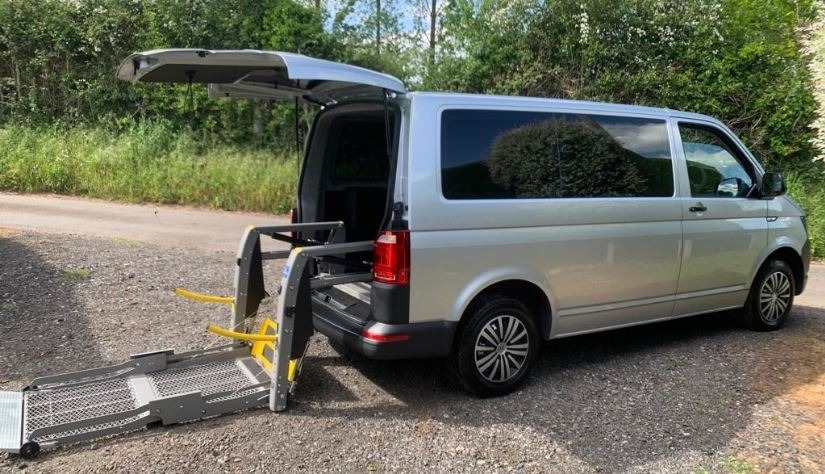Rear Entry vs Side Entry Wheelchair Accessible Vehicles
When it comes to choosing a wheelchair accessible vehicle, one of the crucial decisions is whether to opt for a rear entry or side entry conversion. Both options have their own advantages and limitations, and it's important to consider various factors before making a choice.
Understanding Rear Entry Vehicles
Rear entry wheelchair accessible vehicles have their primary access point at the rear of the vehicle. This means that the wheelchair user enters the vehicle through the back. The wheelchair ramp or lift is typically installed at the rear, allowing for easy entry and exit.
Advantages of Rear Entry Vehicles
- Cost-Effective
- Rear entry conversions tend to be more cost-effective compared to side entry conversions, making them a popular choice for individuals on a tighter budget.
- Ample Interior Space
- Rear entry vehicles often offer more interior space, allowing for greater maneuverability within the vehicle. This is especially beneficial for users who require additional space for larger power wheelchairs or scooters.
- Flexibility in Parking
- Rear entry vehicles are more versatile in terms of parking. They do not require as much space on the sides for the ramp or lift to deploy, making them suitable for tighter parking spots.
- Easy Street Loading
- With a rear entry vehicle, it is easier to load and unload a wheelchair user onto the street side rather than into traffic, ensuring enhanced safety.
Limitations of Rear Entry Vehicles
- Limited Seating
- Rear entry vehicles often sacrifice seating capacity due to the space required for the wheelchair user's access. This might be a drawback for families or groups requiring more seating options.
- Reduced Visibility
- Rear entry vehicles can have limited visibility for the wheelchair user, especially when seated in the back. This can make it challenging for them to have a clear view of their surroundings during the journey.
Exploring Side Entry Vehicles
In contrast to rear entry vehicles, side entry vehicles have their primary access point on the side. The wheelchair ramp or lift is usually located on the side of the vehicle, allowing for convenient wheelchair entry and exit.
Benefits of Side Entry Vehicles
- Enhanced Accessibility
- Side entry vehicles provide a more direct and visible entry point for wheelchair users, enabling easier interaction with the driver and front passengers.
- Greater Seating Options
- Side entry conversions often offer more seating options, accommodating larger groups or families who need additional seats.
- Wheelchair User's Position
- Side entry vehicles allow the wheelchair user to sit in the middle or front of the vehicle, facilitating better interaction and engagement with other passengers during the journey.
- Improved Visibility
- Side entry vehicles provide better visibility for the wheelchair user, as they are seated closer to the front of the vehicle. This enhances their overall travel experience and allows them to enjoy the surroundings.
Drawbacks of Side Entry Vehicles
- Higher Cost
- Side entry conversions tend to be more expensive compared to rear entry conversions due to the additional modifications required.
- Space Requirements
- Side entry vehicles need more space on the side for the ramp or lift to deploy, making them less suitable for narrow parking spots or tight parking situations.
Factors to Consider When Choosing between Rear and Side Entry Vehicles
When deciding between a rear entry and side entry wheelchair accessible vehicle, consider the following factors:
- Budget
- Determine your budget and assess which conversion option aligns with your financial capabilities.
- Seating Requirements
- Evaluate the number of passengers you need to accommodate on a regular basis and choose accordingly.
- Wheelchair User's Preference
- Consider the wheelchair user's comfort and preferences regarding seating position and interaction with other passengers.
- Parking Considerations
- Assess the parking spaces available in your regular destinations to determine whether a rear or side entry conversion suits your needs better.
- Accessibility Needs
- Evaluate the specific accessibility requirements of the wheelchair user and choose the conversion that best addresses those needs.
Choosing between a rear entry and side entry wheelchair accessible vehicle is a significant decision that should consider the specific needs and preferences of the user.
Rear entry vehicles offer cost-effectiveness and ample interior space but have limited seating options. On the other hand, side entry vehicles provide enhanced accessibility, more seating options, and improved visibility for the wheelchair user but come at a higher cost and require more space for parking.
By evaluating factors such as budget, seating requirements, user preferences, parking considerations, and accessibility needs, you can make an informed decision and select the most suitable option for your situation.

